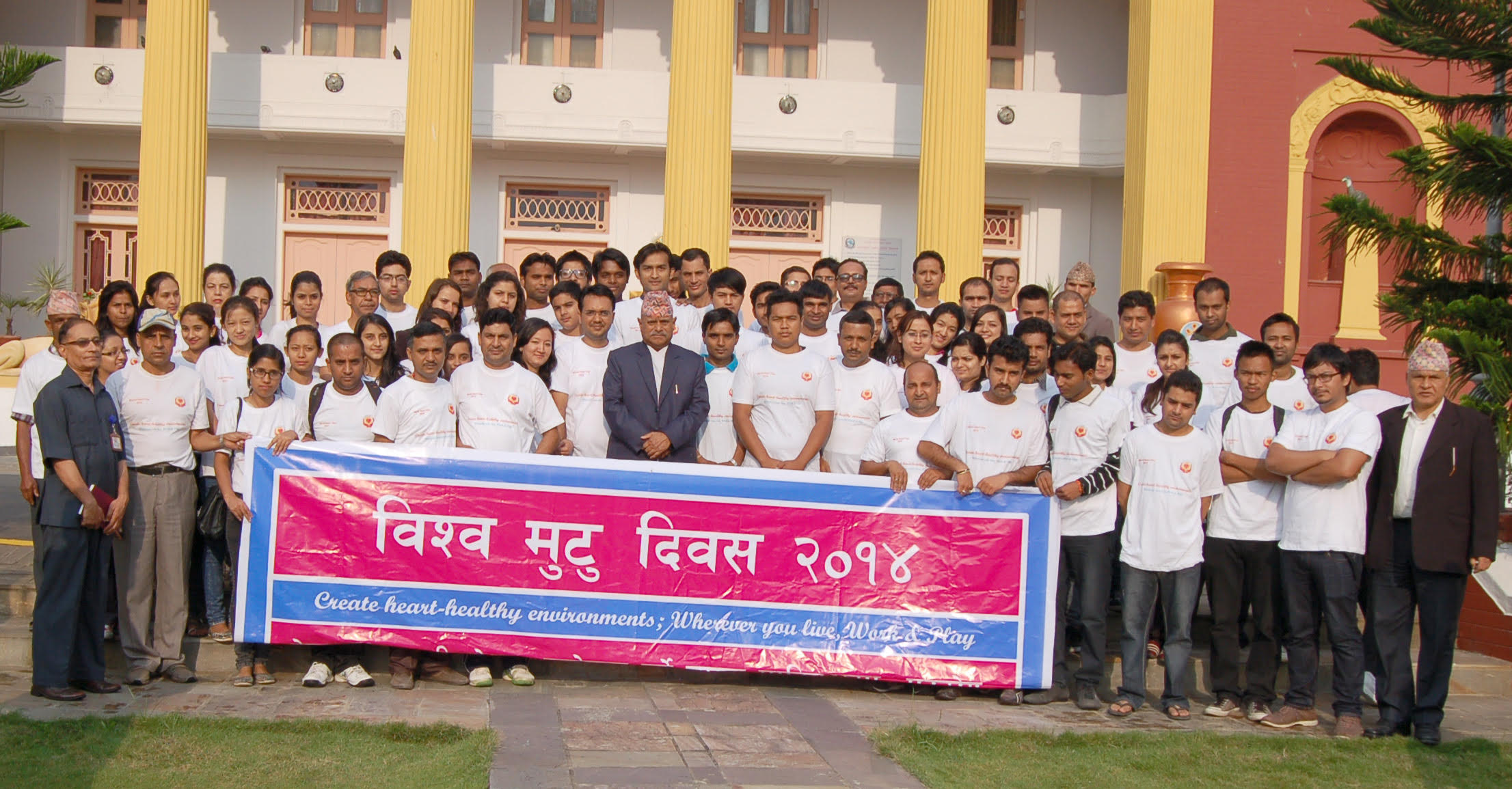Public health surveillance is a cornerstone of disease prevention, control, and health system strengthening. A well-functioning surveillance system not only enhances health outcomes but also fosters economic growth, social well-being, and national stability. It enables timely disease detection, ensures health equity, and supports a healthier workforce, ultimately safeguarding both public health and economic resilience.
Low- and middle-income countries typically allocate only 2-4% of their total health budget to prevention, while 70-90% goes to treatment services. While immediate treatment is essential, long-term strategies must emphasize prevention. As the saying goes, “an ounce of prevention is worth a pound of cure”. Investing in preventive measures can substantially improve lives and reduce healthcare expenditures over time.
Challenges in Nepal’s Health System:
In developing countries like Nepal, the health system faces numerous challenges that hinder effective disease prevention and long-term health improvement. These include limited healthcare infrastructure, inadequate resources, a shortage of trained personnel, and rising rates of both infectious and non-infectious diseases. Despite notable progress in maternal and child health, an annual influx of over 2,500 MBBS graduates, and efforts toward universal health coverage, Nepal still struggles with evidence-based decision-making due to weak surveillance systems and limited knowledge sharing among stakeholders such as NGOs, academic institutions.
Current Public Health Surveillance Landscape in Nepal:
Nepal employs several surveillance technologies for public health monitoring:
1. Early Warning and Response System (EWARS):It is an indicator-based surveillance system that tracks six priority diseases: malaria, kala-azar, dengue, acute gastroenteritis, cholera, and severe acute respiratory infections. However, it is limited to 118 sentinel government hospitals and excludes private facilities. Reporting is weekly, but many designated hospitals fail to report regularly.
2. District Health Information System (DHIS): Managed by the Integrated Health Information Management System (IHIMS),this system collects monthly health utility data nationwide.
3. Surveillance Outbreak Response Management and Analysis System (SORMAS):It is an event-based surveillance system that monitors infectious disease patterns in selected regions, primarily in western Nepal (Sudur Paschim and Gandaki provinces).
Although these globally validated systems have the potential to detect disease outbreaks and guide interventions, their effectiveness is hindered by inconsistent implementation, incomplete reporting, lack of trained personnel, and lack of integration across platforms.
The Critical Need for Effective Surveillance:
Surveillance vehicle worth Rs 50 million being purchased for Pr...

A robust surveillance system serves as the “eyes and ears” of public health, enabling timely detection and response to disease threats. Just as people carry umbrellas when rain is forecast, early detection through surveillance allows health officials to act preemptively against impending outbreaks.
a. Early Detection and Rapid Response: Disease like cholera, tuberculosis (TB), dengue, scrub typhus, kala-azar, malaria pose recurring seasonal threats, particularly in rural areas. A well-functioning surveillance system (which is timely, representative, sensitive, and specific) can quickly identify outbreaks, triggering rapid interventions such as:
o Ensuring medicine availability
o Disinfecting contaminated water sources
o Launching targeted vaccination campaigns
o Conducting hygiene and sanitation awareness programs
b. Informed Decision-making and Targeted Interventions: Surveillance data allows health authorities to allocate resources efficiently. For example, if cholera cases rise in certain districts, local authorities can prioritize diagnostic services, instruct water and sanitation divisions to treat drinking water, and conduct targeted awareness campaigns in affected areas instead of deploying a broad, diluted national strategy. Similarly, disease-specific registries for non-communicable diseases (NCDs) like cancer, heart disease, and diabetes provide critical insights into prevalence, demographics, and survival rates. This data informs policymakers on:
o Establishing specialized care centers
o Implementing early detection programs
o Developing lifestyle intervention campaigns
c. Resource Allocation and Sustainability: With limited healthcare funding, Nepal must prioritize high-risk areas. Not all diseases are prevalent in every district. By scientifically analyzing surveillance data, authorities can pinpoint disease hotspots and allocate resources more effectively. For example, the Ministry of Health and Population (MoHP), in collaboration with the Global Task Force on Cholera Control (GTFCC), conducted nationwide surveillance data analysis in 2024. This study ranked all 77 districts based on cholera risk, relying on DHIS 2 data due to incompleteness of EWARS data. As a result, the MoHP updated Nepal’s “National Cholera Control Plan”, directing major resources to 22 districts identified as high-risk areas.
d. Identifying Risk Factors and Vulnerable Populations: Surveillance and disease registries help pinpoint risk factors and vulnerable populations, which is particularly critical in Nepal, where geographic and socioeconomic disparities impact health outcomes. Data-driven approaches can guide:
o Air pollution mitigation strategies to reduce respiratory diseases
o Improved sanitation efforts to curb waterborne diseases
o Targeted screening programs for high-risk groups (e.g., cervical and breast cancer in women, cardiovascular diseases in older adults)
Moving Forward: Strengthening Nepal’s Surveillance System:
To enhance disease prevention and control, Nepal must:
- Expand Surveillance Coverage: Extend EWARS or DHIS-2 to more hospitals and clinics, including private facilities, ensuring frequent timely reporting. Disease with outbreak potential should be reported within 24 hours for timely response.
- Enhance Data Integration: Improve interoperability across EWARS, DHIS-2, and SORMAS to build a comprehensive national health database. Cross sectoral data integration, such as linking EDCD surveillance data with NWASH database (Ministry of Water Supply) can strengthen waterborne diseases monitoring.
- Invest in Workforce Training: Train healthcare professionals, including clinicians, in epidemiology, disease surveillance, data analysis and interpretation, and outbreak response to improve surveillance efficiency.
- Leverage Digital Health Technologies:Utilize real-time data collection and analytical tools to enhance early detection and coordinated response planning.
- Advance Policy Reforms: Strengthen national health policies to prioritize surveillance and disease registries at local (Palika) level, ensuring sustained government commitment to public health security.
- Share Public Health Data: Make public health data easily available to all stakeholders, including academic institutions, to foster research and innovation in disease surveillance.
Conclusion:
A robust public health surveillance system is crucial for Nepal’s health security. It enables early disease detection, effective interventions, and optimal resource allocation. Strengthening surveillance infrastructure, integrating technologies, and ensuring sustained commitment from policymakers and stakeholders will empower Nepal to protect its population from emerging and existing health threats. A stronger surveillance system will ultimately lead to healthier and more resilient communities.










